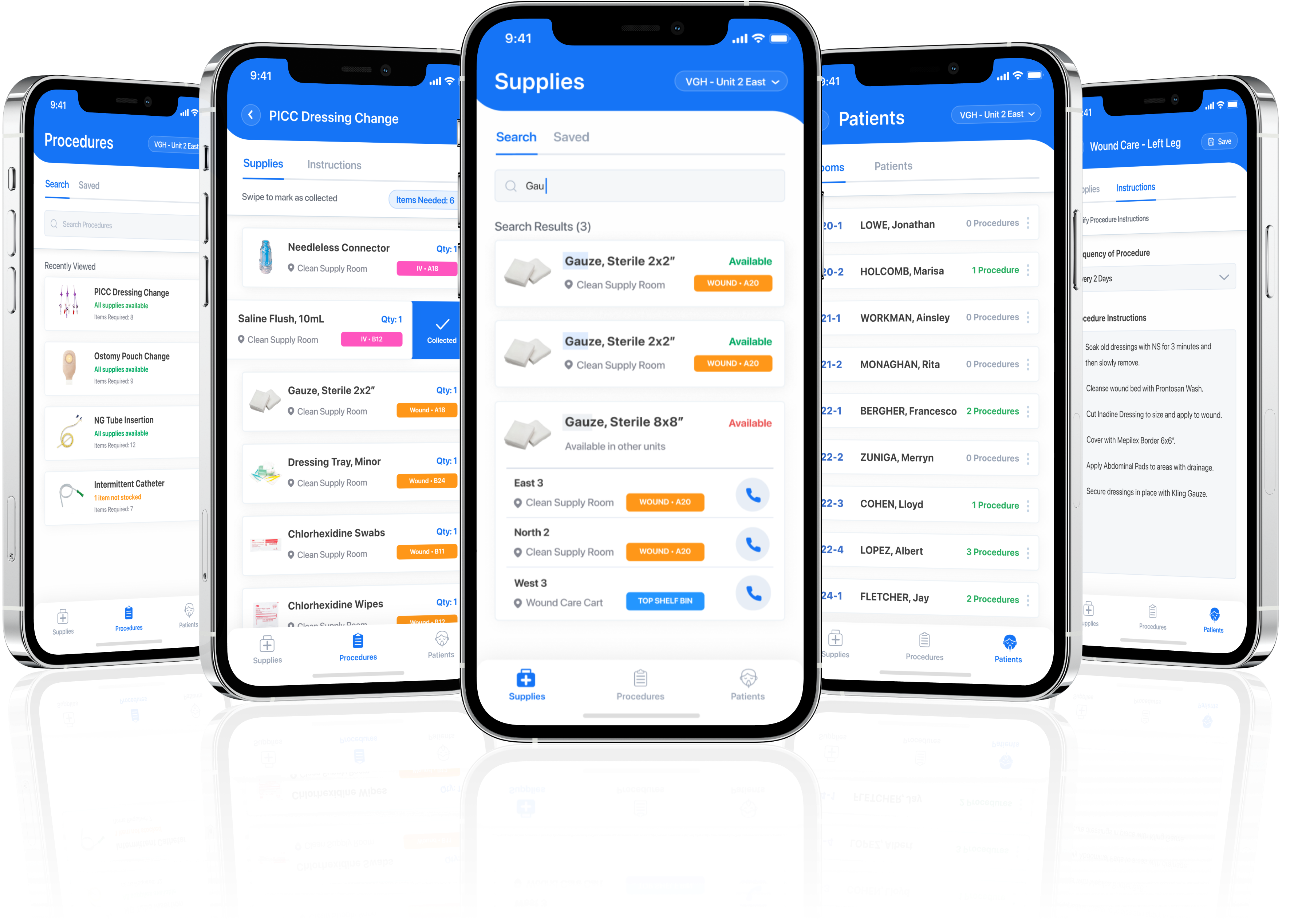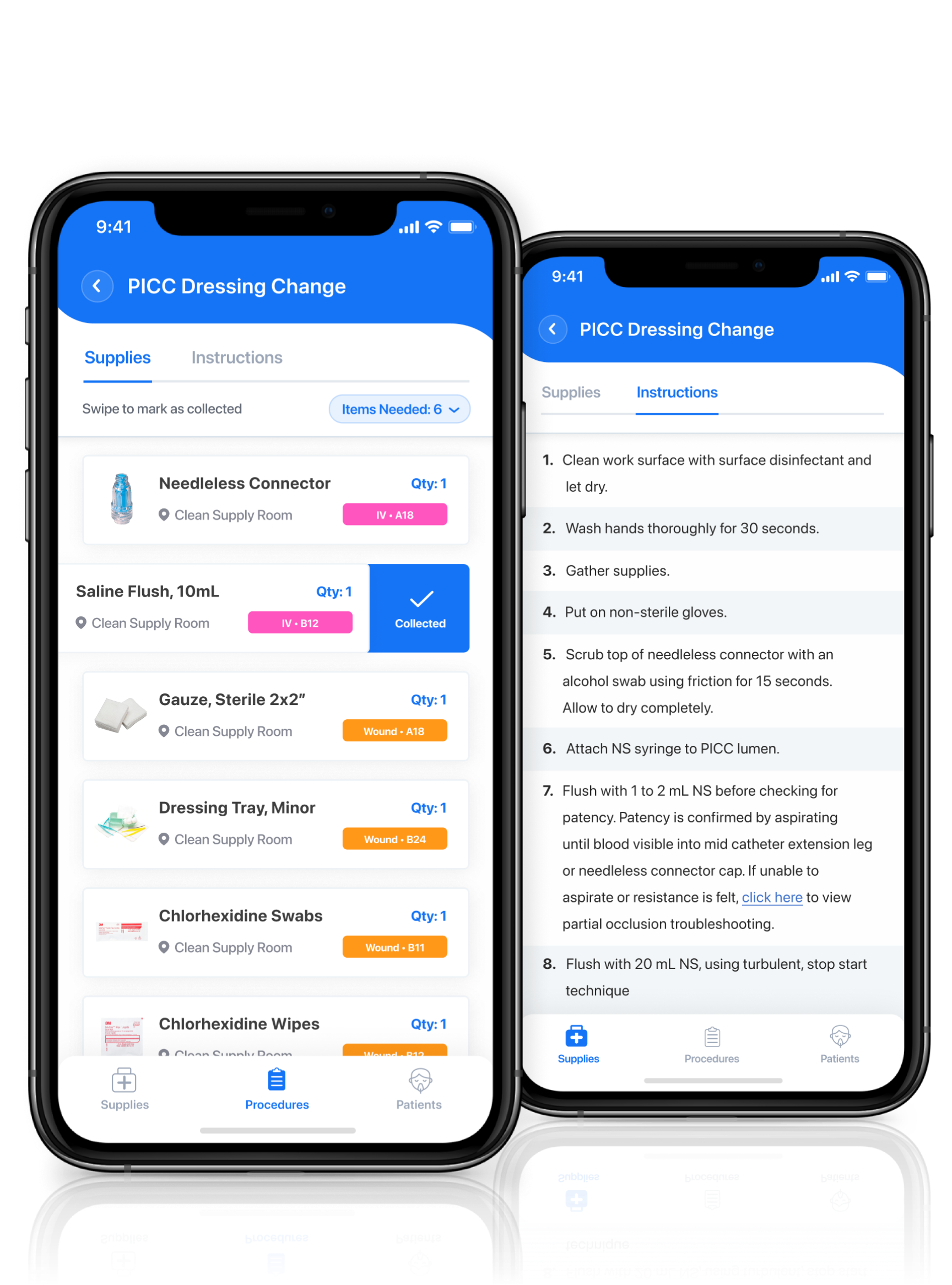
Spend less time searching for supplies, and more time with your patients
As a junior nurse, I found that one of the biggest obstacles in providing timely patient care was trying to find the supplies I needed. The supply room is difficult to navigate as there is an overwhelming number of bins to look through, with no standardized system for finding supplies.
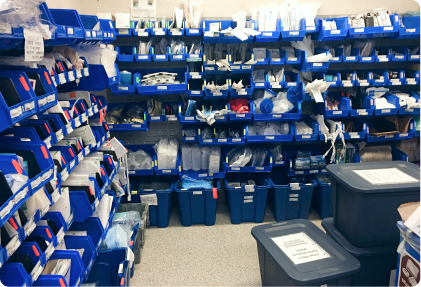
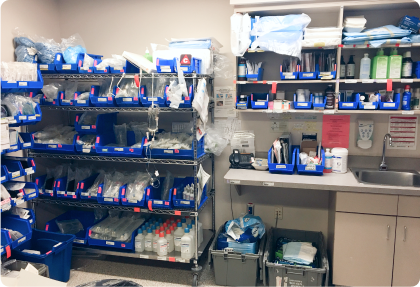
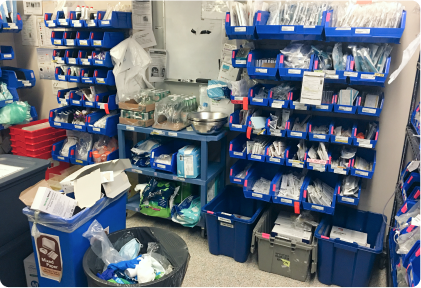
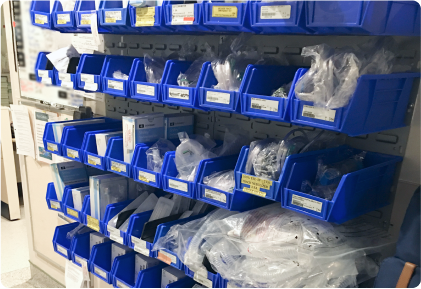
My department was undergoing a quality improvement initiative and was looking for suggestions on ways to make tasks more efficient and free up more time for nursing care. I decided this would be the perfect opportunity to advocate for improvements to our unit supply organization. To get started on this issue, I first created my design question:
Never go searching around for supplies again! Care Direct will help locate everything you need to perform a patient procedure and guide you through the preparation process, freeing up more time for what matters most: direct patient care.
.png)
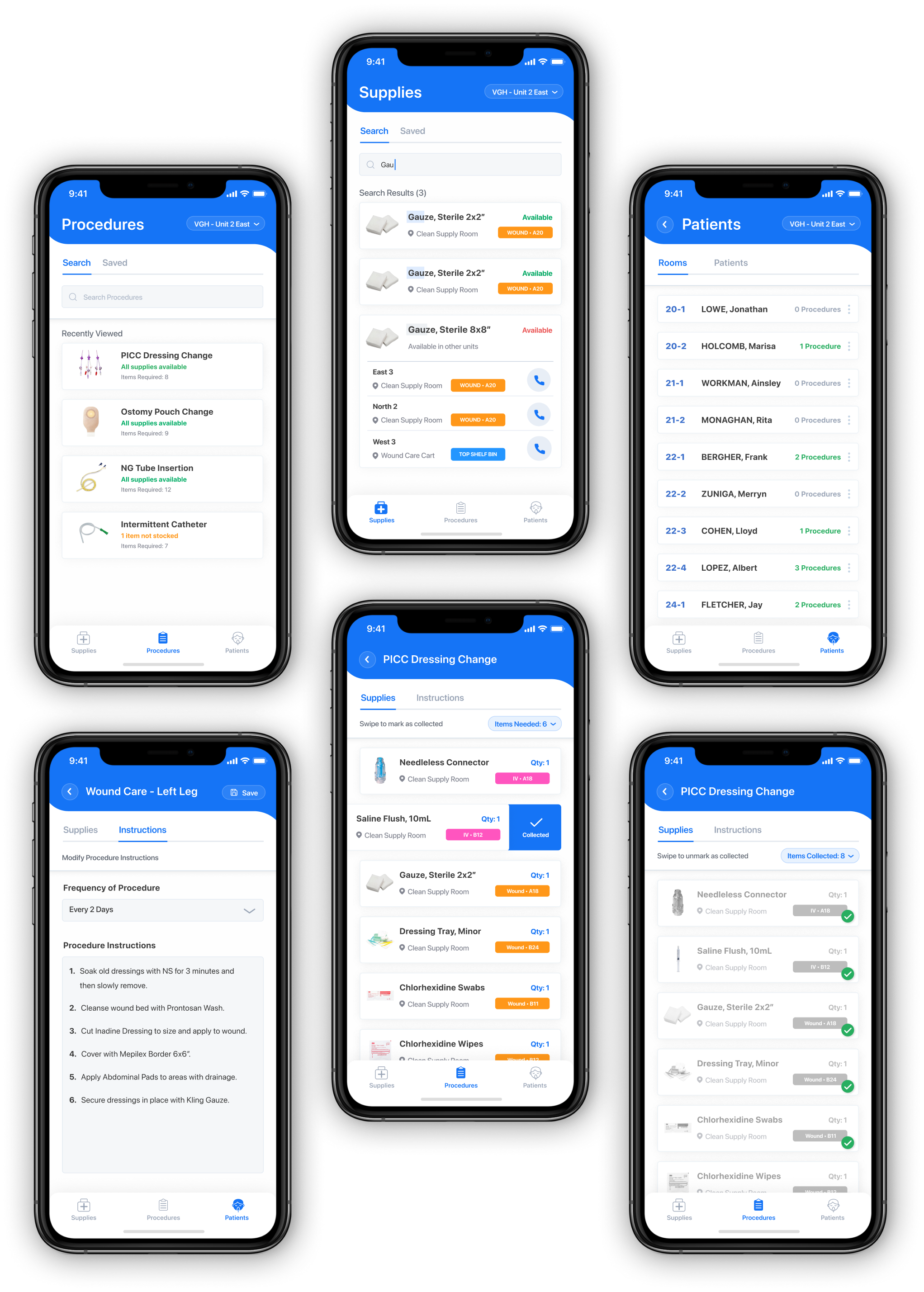
First, I wanted to learn more about how the supply room is currently organized. I spoke with the area supply attendant and discovered that the supplies are grouped into 8 colour coded categories, indicated on each bin by a plain coloured label.

Next, I conducted interviews with colleagues to explore their experience with performing procedures and finding the necessary supplies. Pain points were identified at each step.
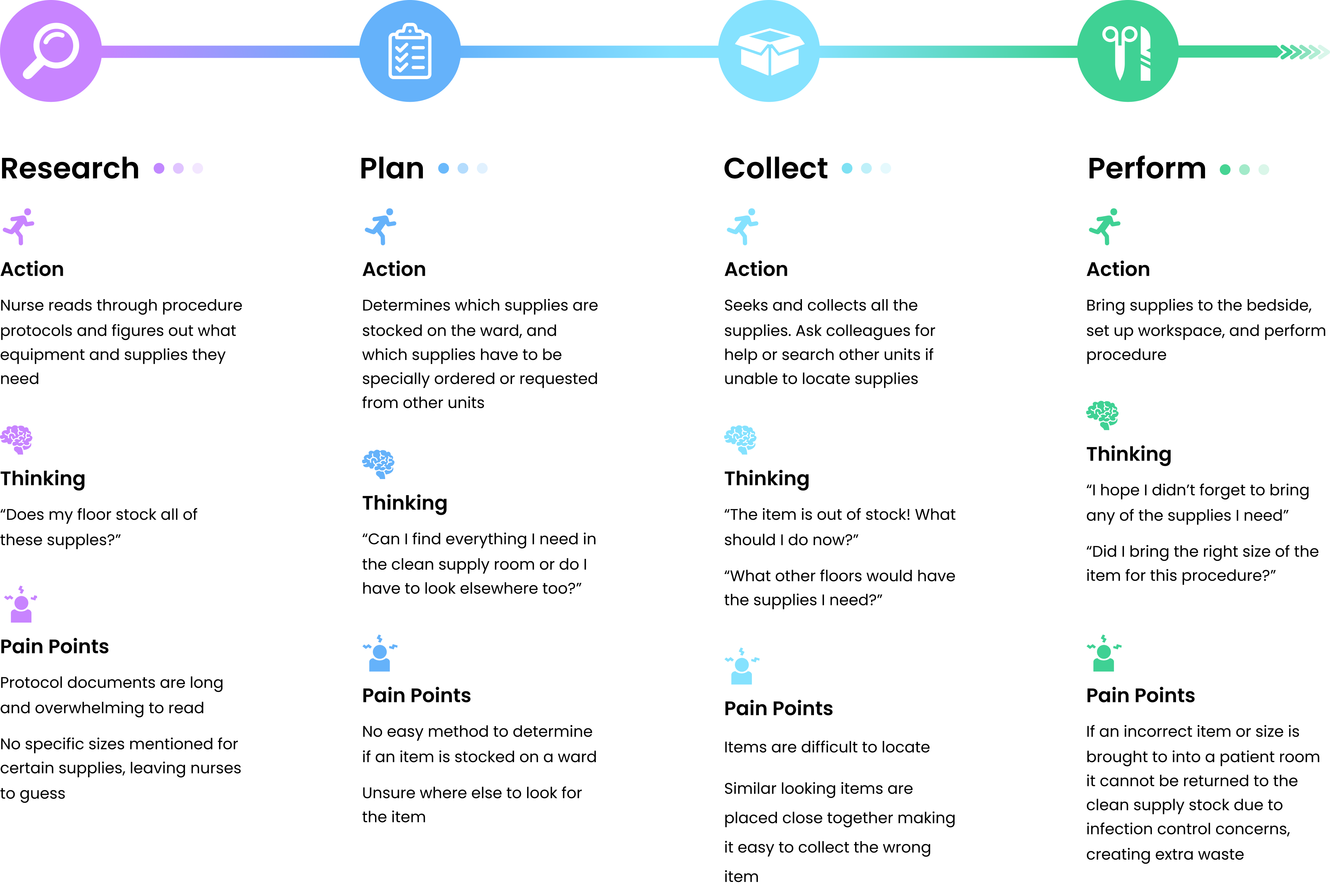
Researched showed that out of the time a nurse spends providing patient care, only 61% is spent directly with the patient. The remainder was comprised of indirect patient care tasks, such as planning for procedures, reviewing policies and care plans, and gathering the necessary supplies.
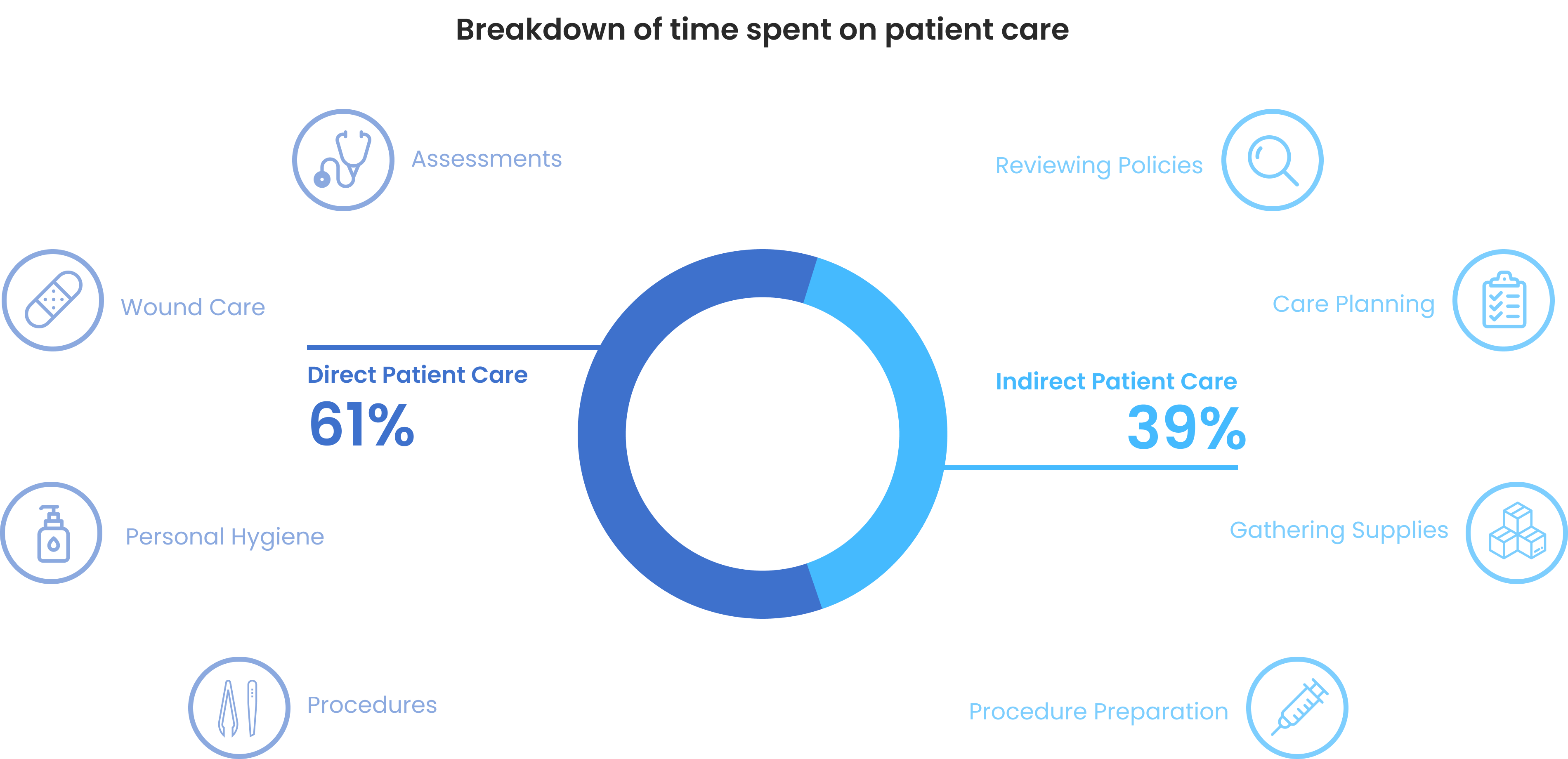
I found that a lot of the pain points I identified were related to indirect patient care, so I decided to focus on reducing the time nurses spent on this area. I asked my colleagues for input on indirect care tasks (like procedure preparation) that they found too time consuming.

Based on the information gathered from my research and interviews, I was able to narrow down the focus to 3 main problem areas.
Nurses may not always know exactly what supplies they need for a procedure
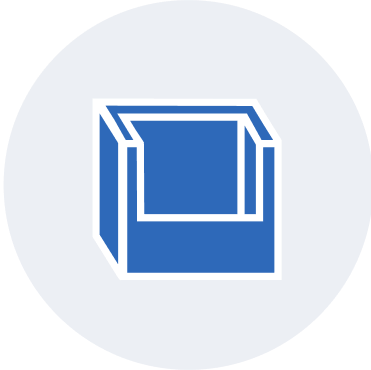
Nurses often have trouble locating the required supplies
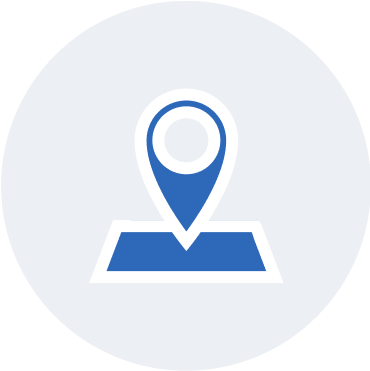
With the primary problem areas identified, I defined the features that would serve as the basis of this project.

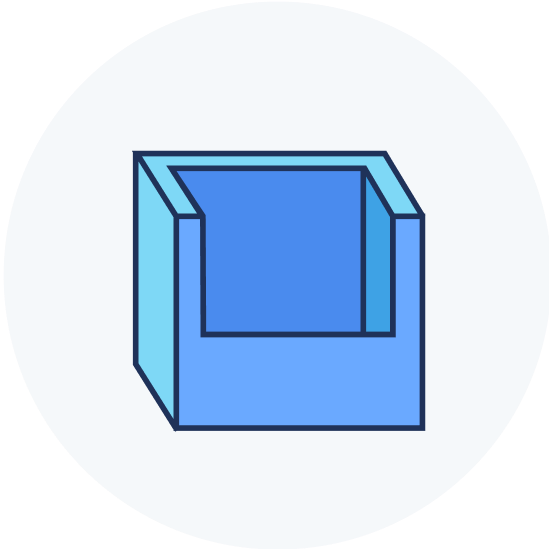

With the areas of opportunity in mind, I defined the product structure. I added one additional feature where users could assign custom procedures to specific patients, in cases where a patient had specialized procedures unique to them.
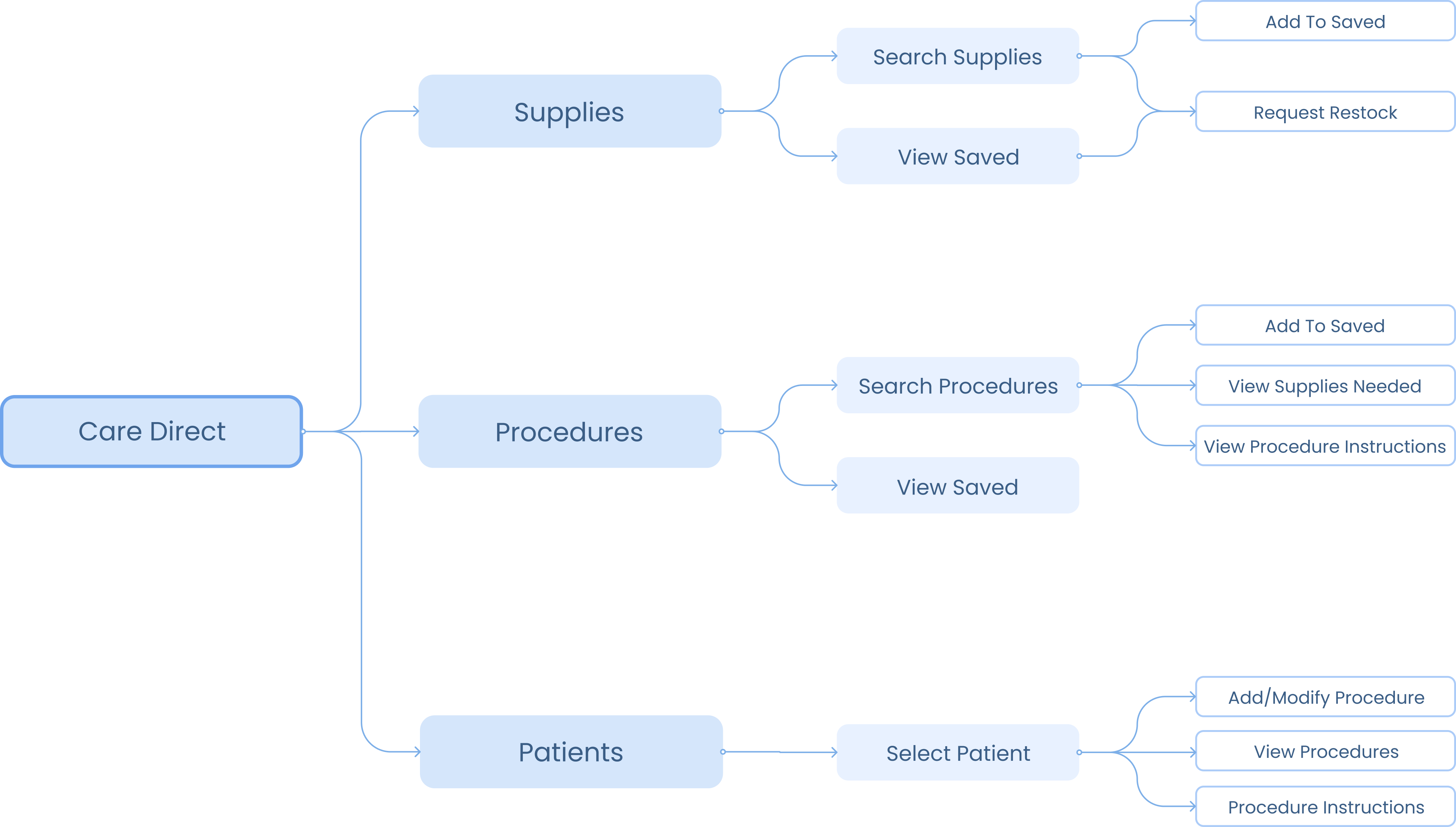
To quickly locate bins, I decided the most practical option was a grid system - the horizontal rows would be ordered alphabetically, and the bins would be sequentially numbered. The user would now be able to quickly find an item by referring to the alphanumeric identifier (for example, B2).
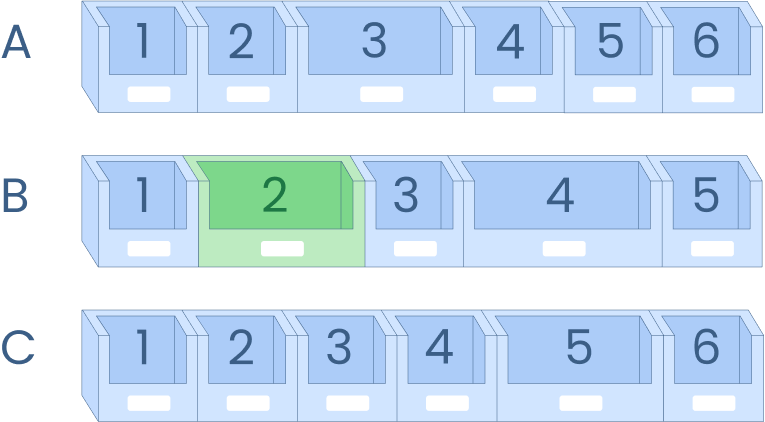
Using the system above, the app would direct nurses to the appropriate bin to find an item as shown below.
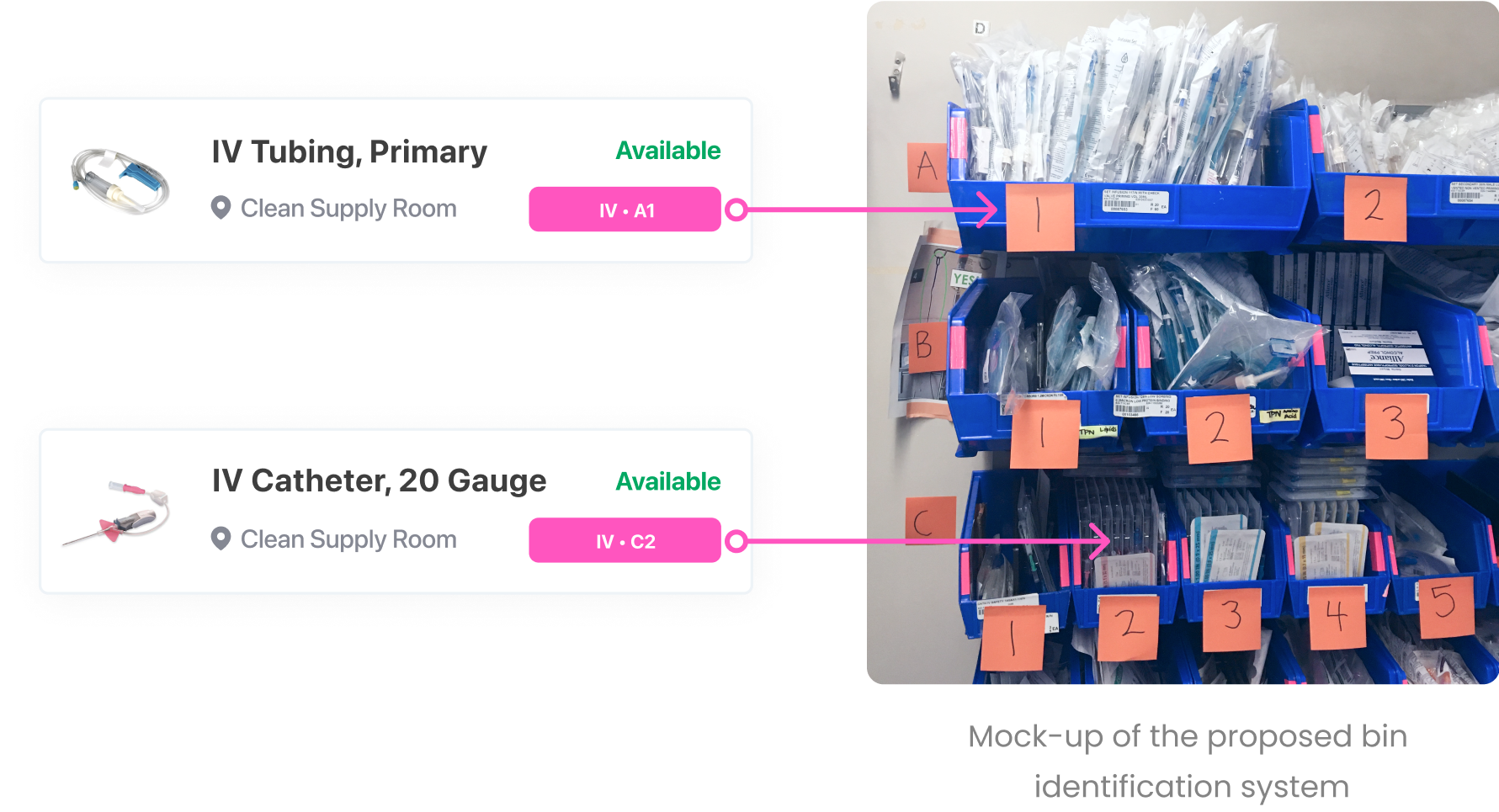
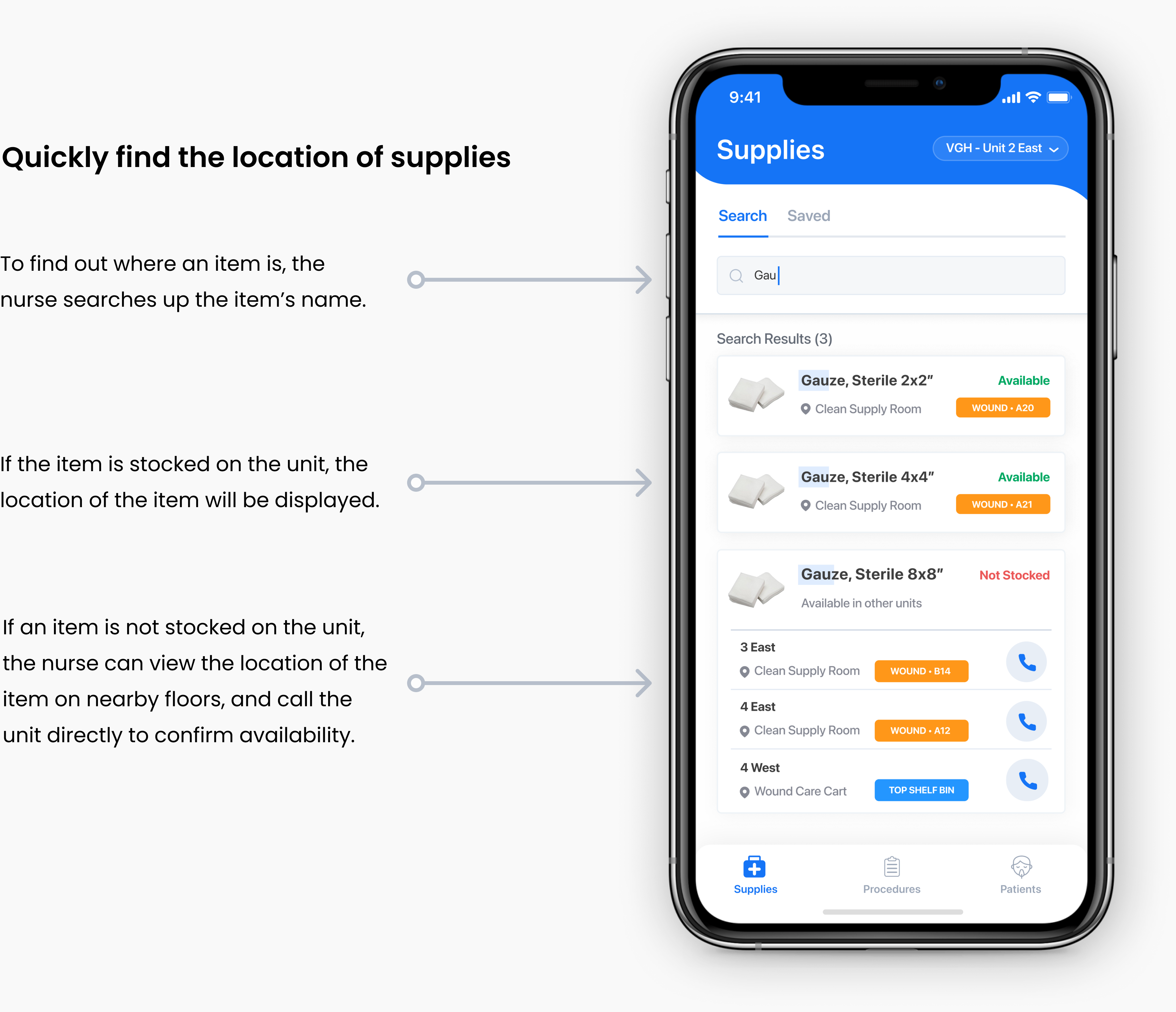
.png)
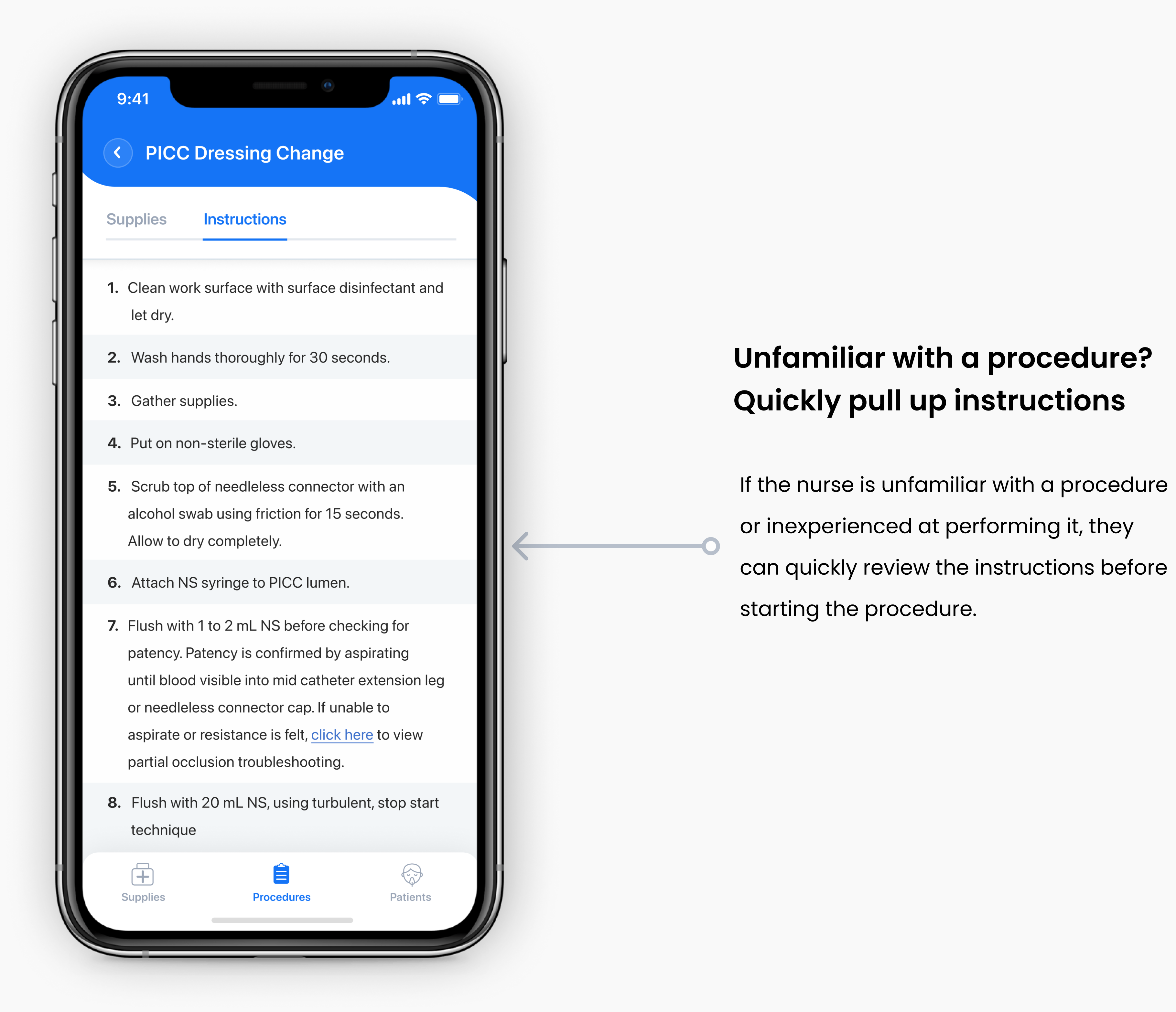
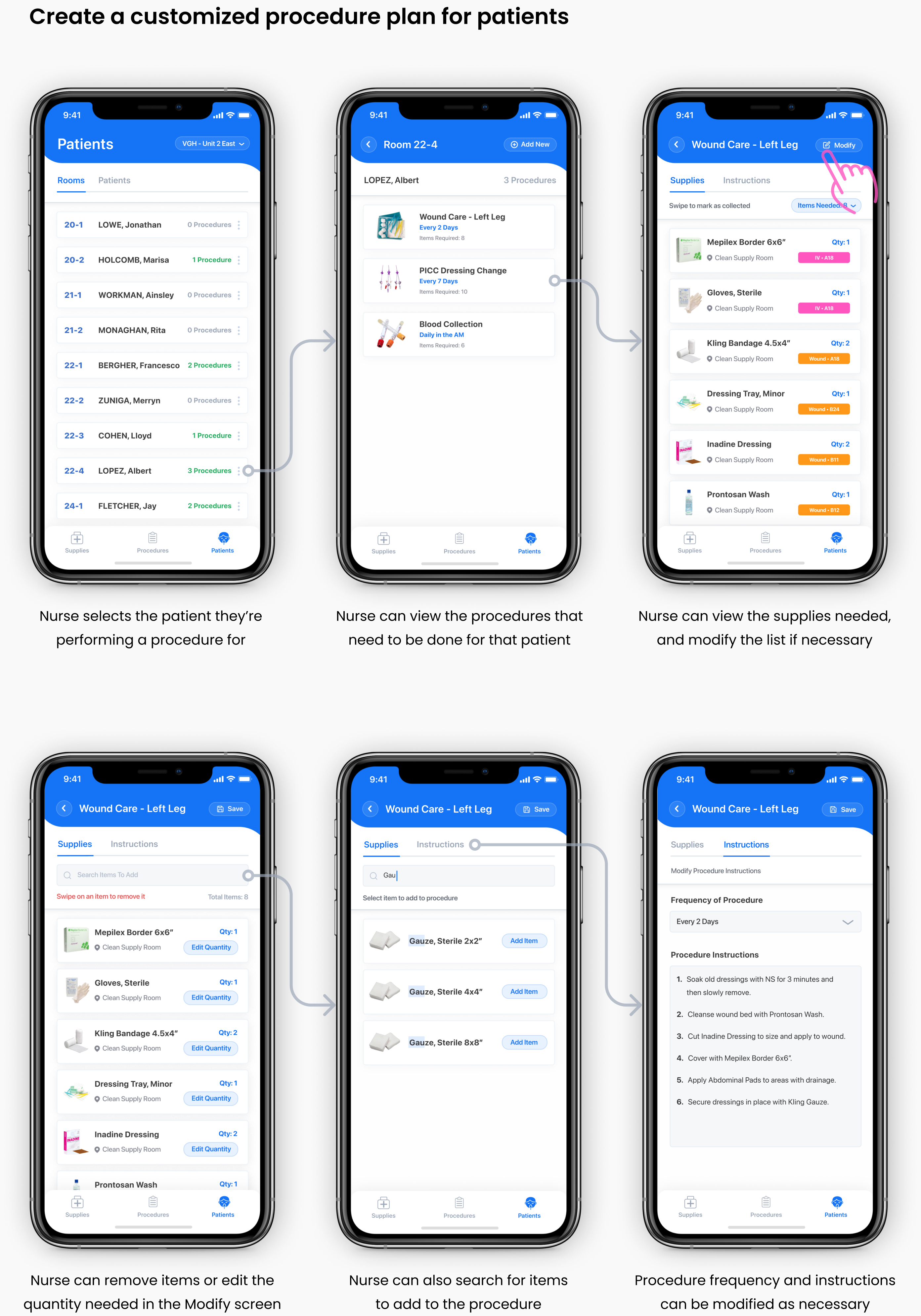
To test how effective the item locating feature was, participating nurses were split into two groups (a control group and a test group), and then asked to collect 15 items from the supply room for a mock procedure.
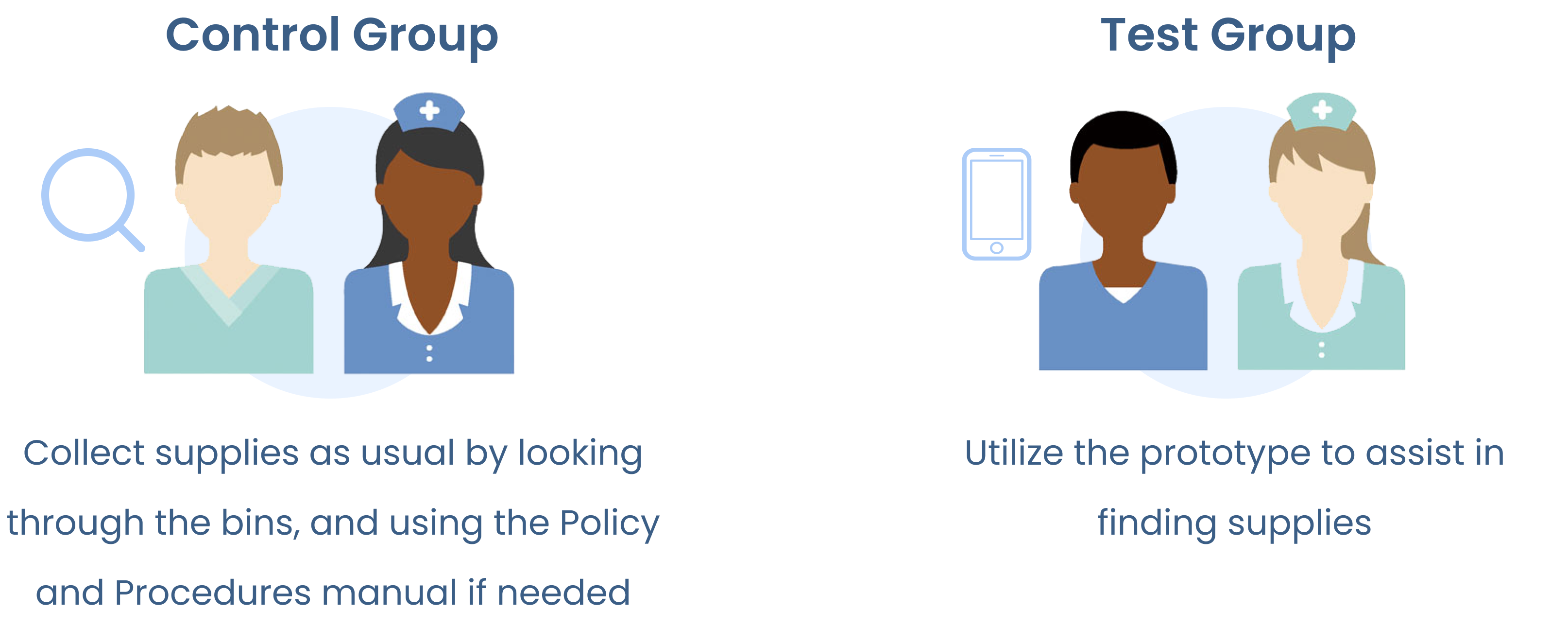
Nurses in the test group who used the prototype were able to find all their supplies faster.

The impact was most pronounced on junior nurses with less than 1 year of experience. Senior nurses experienced slightly less of a benefit as they were more familiar with the layout of the supply room, allowing them to locate items more easily without assistance. However, overall they still located their items faster with the help of the prototype.
For the purposes of my testing, all items that needed to be collected were ones that were stocked on our floor. I did not get the opportunity to test with items that were not normally stocked on our unit. However, I predict that the supply locator would be very helpful in these situations, as the current method of manually phoning down to other wards to ask if they stock that particular item is extremely inefficient and time-consuming.
The quality improvement team really liked the idea of using alphanumeric codes as bin identifiers, and a potential method for implementing this as a hospital wide standard will be considered in a future quality improvement phase due to the scope and magnitude of this redesign.
The initial problem was a very interesting one to tackle, and I really enjoyed working on this project. It was encouraging to see promising outcomes from other nurses using my prototype as a tool to reduce procedure preparation times. Throughout this process, I gained valuable experience in research through interviews, and in real world user testing with quantifiable metrics to validate the feasibility of my designs.
